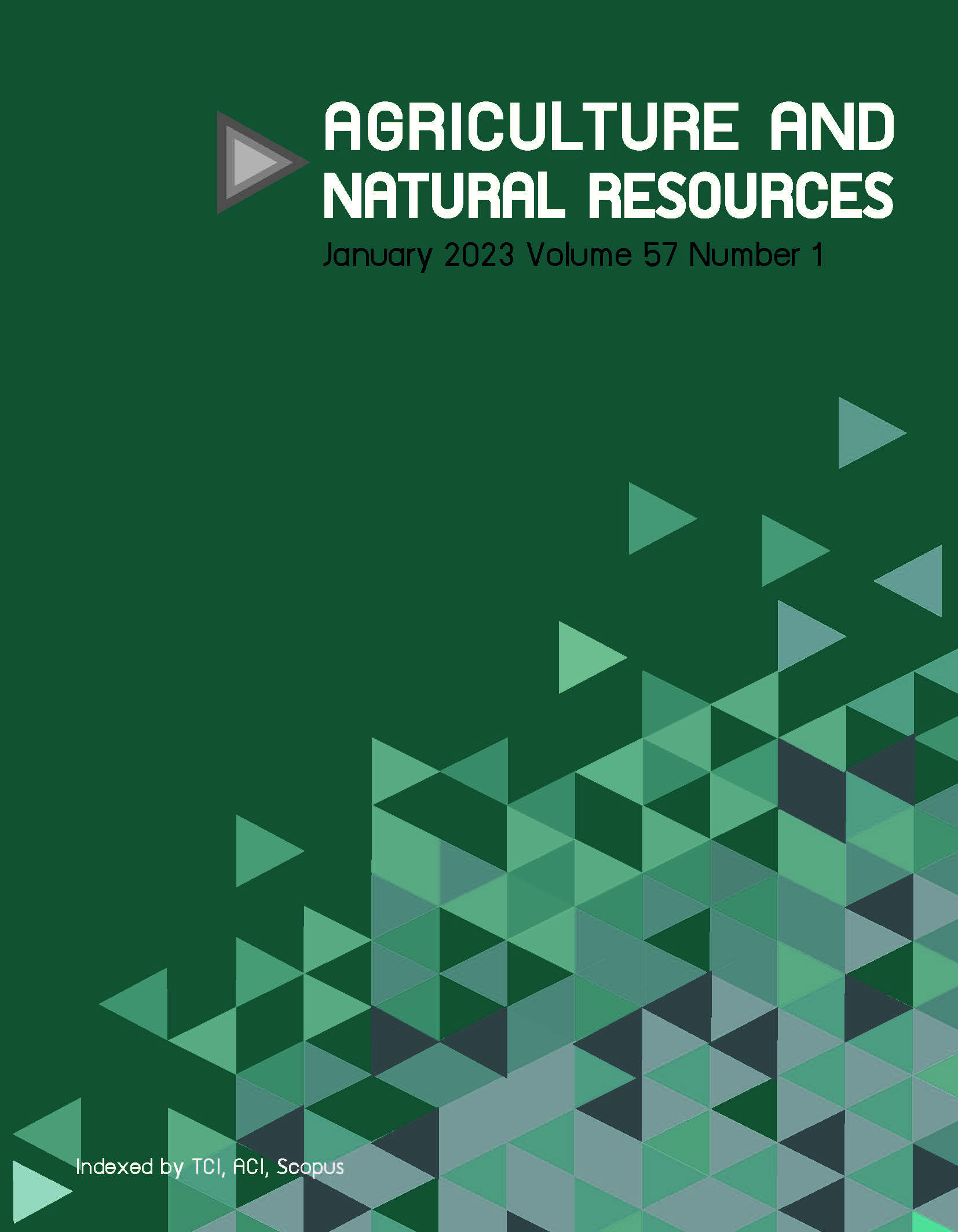Identification of quantitative trait loci controlling flowering time in black gram (Vigna mungo [L.] Hepper)
Keywords:
Black gram, Flowering, Quantitative trait loci, Single nucleotide polymorphismAbstract
Importance of the work: Flowering time is a key adaptive trait for expanding cultivation to high-latitude regions. However, little is known about the genetics of this trait.
Objectives: Quantitative trait loci (QTL) controlling days to first flowering in black gram were identified in only the second report published.
Materials & Methods: Two F2 populations were each developed from a cross between cultivated (Chai Nat 80 (CN80)) and wild black gram (PI213017 and TVNu 1076) accessions and grown in different environments. Two high-density linkage maps were constructed from these populations using single nucleotide polymorphism markers.
Results: Broad-sense heritability for days to first flowering in the F2 populations was in the range 34.86–61.95%. QTL analysis revealed 11 QTLs controlling days to first flowering in two populations. Four QTLs (qDFFBGA2.1, qDFFBGA5.1, qDFFBGA8.1 and qDFFBGA9.1) were found in the population of CN80 × PI213017 that explained 8.93%, 7.87%, 11.13% and 10.88% of phenotypic variation, respectively. Seven QTLs (qDFFBGB2.1, qDFFBGB2.2, qDFFBGB4.1, qDFFBGB6.1, qDFFBGB8.1, qDFFBGB8.2 and qDFFBGB9.1) were found in the population of CN80 × TVNu 1076 which explained 38.02%, 4.22%, 3.36%, 7.12%, 3.85%, 4.41% and 19.42% of phenotypic variation, respectively. Nonetheless, no QTLs were common between populations, suggesting flowering time in black gram is highly influenced by environmental factors.
Main finding: New QTLs controlling flowering time in natural short daylength and long daylength regimes were identified. None of the candidates were similar with those previously reported in Vigna species related to black gram, suggesting that one or more of the flowering pathways in black gram are different from other Vigna species.
Additional Files
Published
How to Cite
Issue
Section
License
Copyright (c) 2023 Kasetsart University

This work is licensed under a Creative Commons Attribution-NonCommercial-NoDerivatives 4.0 International License.
online 2452-316X print 2468-1458/Copyright © 2022. This is an open access article under the CC BY-NC-ND license (http://creativecommons.org/licenses/by-nc-nd/4.0/),
production and hosting by Kasetsart University of Research and Development Institute on behalf of Kasetsart University.







